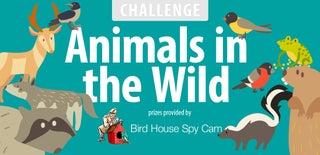Introduction: Shooting Macro Photos
Today I decided to talk about shooting macro photos. For those of you who are new to this, it means taking really close-up shots of a subject with lots of interesting colors and/or textures. It can be really fun, but it can also be frustrating to find the perfect subject. I use an Olympus Tough Stylus tg-860, but there are plenty of great macro cameras out there. I have found the Olympus to be a great camera for all kinds of photography. I have also tried the Panasonic Lumix ts30 with great results.
Step 1: Materials Needed
- Camera (a small point-and-shoot is best for this kind of photography, because a large camera like a DSLR will cast a bigger shadow, and possibly scare away your subject. If you are shooting for a large format print, you will want one like the Olympus Tough that has a reasonably large image sensor and processor)
- Subject (the smaller the better, although you don't want it to be too small)
- Light source (this can help if your shadow obscures the subject)
Step 2: Finding a Subject
The subject should have lots of exiting texture and color, some great subjects are:
Bug heads
Snakes
Feathers
Dirt
Small toys
(Snakes are pretty hard to capture in a smooth photo, the best way is to catch them and then have someone else hold them still while you shoot)
All of these are easily available (mostly) but I would recommend a nature walk or even a walk through a store to find some really great texture shots.
Step 3: Observe for Motion
Next you will need to look for a pattern in the movement of your subject. If it is not moving, the job is that much easier, but for things like centipedes and millipedes, you will need to time your shot to get the legs at the best possible time. I also would recommend capturing your subject if at all possible. Please use all due caution and care when doing this.
Step 4: Look for Texture
I especially like to find subjects that look totally different up close than what they really are in person. If you take a good enough shot, you can use it for a guessing game like National Geographic uses. Things with a large texture work nicely, as they only hold a fraction of the subject in the frame.
Step 5: Pay Attention to Distance
Things tend to shift and distort when you put the lens close up, so if you don't want a super stretchy fish, probably the best position is down. For this photo, I was asked to create the worlds longest piece of bacon. How did I do?
Step 6: Shoot
I always take at least two photos, but that is a rarity. Always take more than less, because you can delete, but you can seldom go back and recover the perfect shot.
Also, all the pictures in this intractable were taken by me, and if you would like a copy of any of then, please feel free to email me at Kellincogan@gmail.com

Participated in the
Beyond the Comfort Zone Contest

Participated in the
Makerspace Contest

Participated in the
Animals in the Wild Challenge











